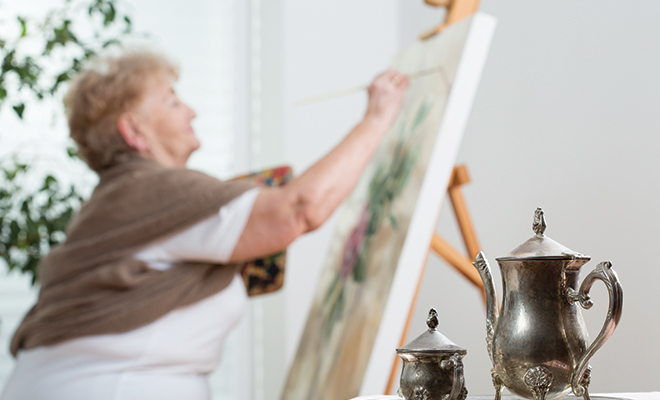
The Arts and Healing: Helping Cure Through Expressive Therapy
If you have ever spent time in a hospital, you know that it can be a daunting place. The environment is sterile and often dull; while hospitals are designed for health and healing, the general atmosphere can seem anxious and bleak.
Enter art–all kinds of art. Painting, drawing, music, dance and poetry have been flowing from hospital rooms and walls with profound healing effects for those inside. Doctors, nurses and therapists are working with artists and musicians to heal people of all ages with various conditions including cancer, AIDS and chronic disease.
“Arts in health and healing” is the combination of any art form within a wide variety of healthcare and community settings for therapeutic, educational and expressive purposes. Combining the creativity of the arts with the science of healthcare has been proven to benefit patients, their families and caregivers. Although many of these programs have only been developed over the last several years, healing arts are a natural integration of what was always a part of medicine–the connection between mind and body.
According to the Arts & Health Alliance, almost half of all hospitals offer some sort of arts program for their patients. Patients and even their caregivers are being inspired to paint, sculpt, dance, sing and story tell their way to better health. In art and healing, the artist is the patient. No training is needed, and the creative process aids in healing
Kim McKenzie, visual art therapist at the University of Alabama at Birmingham Hospital, knows firsthand the significance of the link between creative expression and health. “As we have progressed in our science-focused society, we have lost our connection to spirit or soul,” she affirms. And although a more modern and scientific approach to healing is natural, McKenzie notes that ancient techniques focused mainly on the soul and mystical treatments for getting better. “But now is the time of integrating the best of both worlds. We have the marvels of science, the innovation of medicine and surgery; add to that the healing effects of creativity, and wow, a new era in healing has begun!”
McKenzie, who also provides art therapy to older adults in independent living facilities, routinely receives positive feedback from those she inspires. “At this stage in life, it is a natural to redirect some time to art making. My students tell me how it awakens them and reminds them of all the creative potential they once had and wanted to express but life, family or jobs did not allow it.”
Art in healing offers vast benefits to those who use it. Patients who partake are found to be more optimistic and hopeful while experiencing less boredom, anxiety and loneliness. Many times, patients with severe prognoses are able to let go of fears and stress and better communicate their concerns about their treatments and procedures to their doctors and families. They also tend to feel less pain and respond better to treatment since a less stressed body is easier to heal than a tense one.
The proof is in the painting, so to say. In a recent University of London study, participants’ blood flow increased ten percent to the “joy response” part of the brain when they viewed beautiful paintings, similar to the way you feel when you see a loved one. The study gives credence to what experts have always thought: that visual art has a strong, positive physiological effect on the brain.
Perhaps the most significant art therapy progress has been seen in children. While staff and volunteers provide the entertainment, education and diversion, the children are able to express their feelings, build self-esteem and maintain a more positive outlook toward their illness. Even the children believe in the importance and power of the art that they are creating, and they want other patients to experience it, too. Often, paintings and sculptures are displayed in special exhibits throughout the hospital, while some are donated by the children to raise money for more art supplies. Many programs are interactive concerts and performances for families, so parents can better cope with their child’s illness or disease.
It seems that not only patients and their families experience the positivity of the arts; providers and institutions are naturally benefiting from the programs as well. With less patient and caregiver stress, the environment is ripe for improving health outcomes, enhancing patient safety and increasing overall quality of care, not to mention reducing costs and improving job satisfaction.
No matter what the situation, any length of hospital stay is traumatic and stressful. But for the patients and their loved ones who are part of a plan that includes art and its therapeutic affects, the road to recovery becomes a little easier. By treating illness with a combination of science and art, the potential is greater to change the lives of everyone involved. HLM
Sources: artandhealing.org, htta.org and uabmedicine.org/arts.







